
Material tactility, its possibilities, limitations, and transformation form the core of Kelly Akashi's practice. Originally trained in analog photography, traditional processes and the materiality of documents continue to inform and fuel her sculptural explorations. Working in a variety of media, such as wax, bronze, fire, glass, silicone, copper, and rope, Akashi investigates the capacity and boundaries of these elements and their ability to construct and challenge conventional concepts of form.
Kelly Akashi's major solo exhibition, Formations, is currently on view at the San Jose Museum of Art. The exhiibtion will travel to the Frye Museum in Seattle and the Museum of Contemporary Art San Diego.


Throughout the past two decades, Uta Barth has made visual perception the subject of her work. Regarded for her “empty” images that border on painterly abstraction, the artist carefully renders blurred backgrounds, cropped frames and the natural qualities of light to capture incidental and fleeting moments, those which exist almost exclusively within our periphery. With a deliberate disregard for both the conventional photographic subject and point-and-shoot role of the camera, Barth’s work delicately deconstructs conventions of visual representation by calling our attention to the limits of the human eye.
Building on her investigation of visual perception, Barth's series Deep Blue Day explores notions of the atmospheric and ephemeral through light as it shifts over time. Here, Barth overtly manipulates her surroundings by drawing the folds of her living room curtains in order to shape shifting rays of sunlight over the course of an afternoon.
Uta Barth's major solo exhibition, Peripheral Vision, is currently on view at the Getty Center in Los Angeles.


Over the past decade, artist Math Bass has developed a lexicon of symbols—letters, bodily forms, architectural fragments, animals, bones—arranged in a variety of scores, each symbol an empty space of meaning, filled in by the context in which it finds itself. Repetition of these symbols, rather than codifying them into one solid signification, exposes the difference at the heart of each iteration; there is always a gap in meaning, something unnamable left out of and left over in the viewer’s reading—a jouissance. It is this gap in the symbolic where Lee Edelman states queerness lies—not as an easily categorized liberal identity but as a process of unmaking and undoing that leaves (gendered) subjectivity as we know it in question. That these symbols are familiar only heightens our unsettling; the negative space of these compositions, a major player in Bass’s practice, adds further to the gap.


Among the most important artists of her generation, Monica Bonvicini’s evocative and thought-provoking sculptures, installations, texts, photographs, videos and public projects explore the relationship between architecture, gender and power. For the past three decades, Bonvicini’s multifaceted practice has confronted issues of institutional critique and the politics of space. While the idea of the built environment is central to Bonvicini’s research so is the concept of destruction. Her work aims to expose and destabilize outdated social and political structures in ironic and playful ways. Dry-humored and direct, Bonvicini’s art never refrains from establishing a critical connection with the sites where it is exhibited, the materials that comprise it, and the roles of spectator and creator.
Monica Bonvicini’s major solo exhibition I do You opens at Neue Nationalgalerie, Berlin on November 25, 2022.

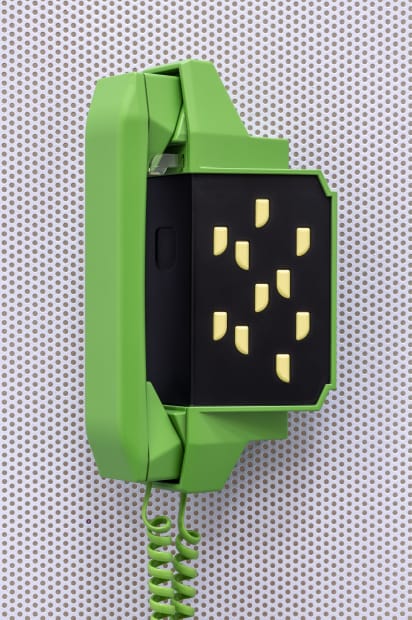
Martin Boyce’s works poetically investigate the intersections between art, architecture, design, and nature. Since the
beginning of his career, he has incorporated a palette of shapes and forms that frequently recall familiar structures from the built environment, yet presents them in a way that is entirely new. Collapsing distinctions between past, present, and future, Boyce’s works seem to exist in their own autonomous world, untethered to any fixed time or place.
Long Distance (I Travelled Far and Wide) incorporates the recognizable form of the wall-mounted telephone set against a large, perforated panel painted pink. While the phone seems to be a relic of a bygone era, the retrofuturist color and design make it seem like an oracle from the future. Alluding to its battle against obsolescence, Boyce examines the phone’s territorial relationship as a portal between two fixed points in space and time and observes the conditions and circumstances in which information and memory operate in relation to today’s digital technology.
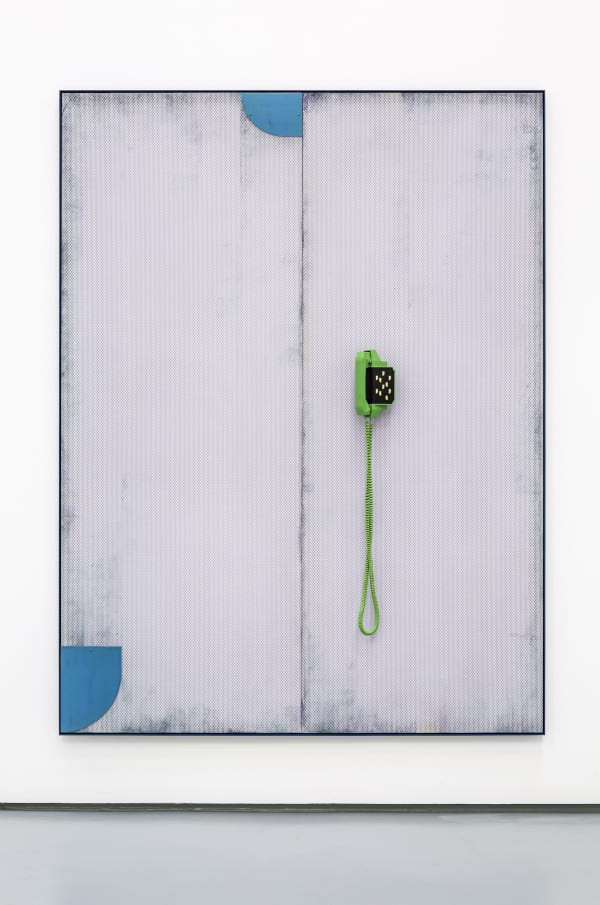

Since the early 1990s, Sandra Cinto has developed a rich vocabulary of symbols and lines to create lyrical landscapes and narratives that hover between fantasy and reality. Using drawing as her point of departure, the artist renders intricate and mesmerizing seascapes, rainstorms, and celestial skies that frequently engage with the surrounding architecture to create seemingly weightless, immersive environments. Evoking stories of human hardship and redemption, Cinto's fantastical imagery serves as a metaphor for the human odyssey, while also pushing the limits and possibilities of drawing.
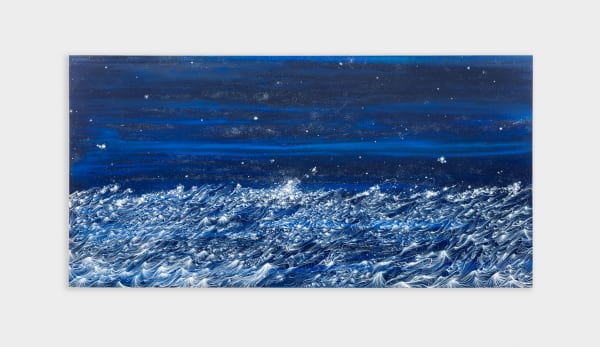
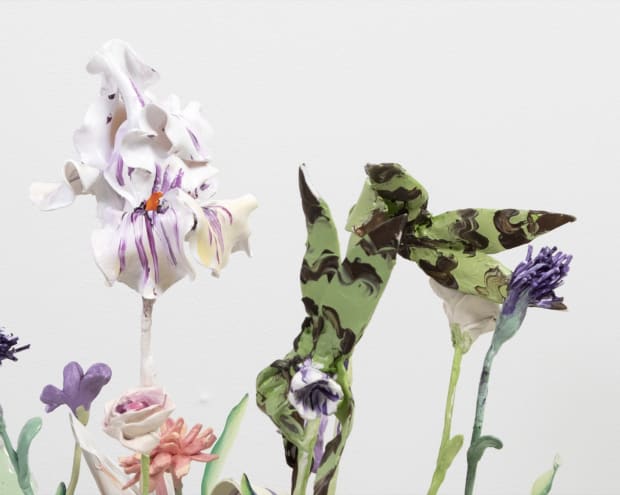
Nathalie Djurberg and Hans Berg’s new series of sculptural flowers offer a fragile beauty and an untamable, organic logic of their own. Constructed from mixed media – employing modelling clay, paint, fabric and resin – the sculptures recall real species of lilies or orchids, as well as fantastical floral arrangements in other-worldly colors and forms. Flowers recur in Djurberg & Berg’s practice due to their abiding interest in the fleeting nature of human emotions and their shared symbolism for human themes of love, joy, desire, sadness and vulnerability. Representing the circle of life, from a shy bud to a beautiful blossom to a withering plant, the flower form has been a constant interest in Djurberg and Berg’s practice.
In 2009, the artists created their first major work inspired by flora and fauna, a subversively surreal and immersive Garden of Eden, entitled The Experiment, for the 53rd Venice Biennial, for which they were awarded the Silver Lion for best emerging artists.
Nathalie Djurberg & Hans Berg’s solo exhibition, A Pancake Moon, is currently on view at Tanya Bonakdar Gallery, Los Angeles.
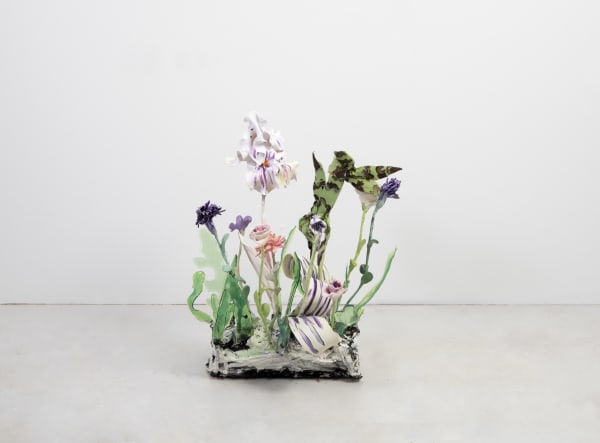
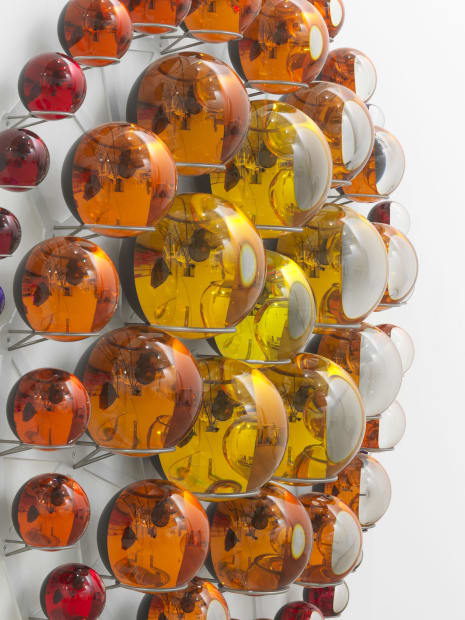
The size of the spheres varies from centre to periphery, with the smallest at the exterior and the largest ones towards the core. Viewed from the front, the spheres appear to be entirely infused with colour. As the viewers move around the artwork, however, their perspective changes and the colours emerge and disappear, along with myriad reflections of the viewers, the surrounding space, and the other spheres.
The concave reflective surface also produces an inverted image of the viewer and her surroundings within each sphere, a dynamic image that disappears when the ring is approached from an angle; a dynamic image that disappears when the ring is approached from an angle; viewed obliquely, the clarity of the glass re-emerges.
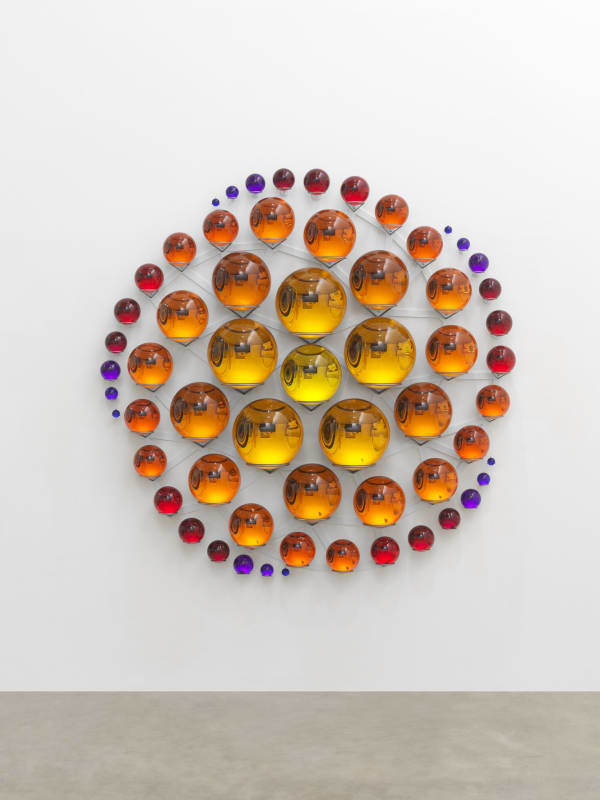

Jónsi’s new work, Iridian Light, is a two-channel sound installation for 13 speaker horns, which are covered in Bismuth. 13 voices are recorded in 432 Hz, which is said to be the natural frequency of the universe, imbuing it with a sense of organic harmony.
Resembling lead in its natural state, Bismuth has the ability to transform into iridescent “hopper crystals,” which are unrecognizable from its previous state. In Jónsi’s work, this transformation alludes to the experience of coming out that many LGBTQ+ people endure, but one that ultimately culminates in a new beginning with freedom. Bismuth is believed to help ease transitions, encouraging a calm acceptance of change and heightening energy levels to be able to adapt and transform by aiding travel between the physical and spiritual realms. Butt plugs, a common motif in Jónsi’s practice, adorn the ends of the speakers, alluding to pleasures that are no longer taboo. Spikes protrude from the sides of the speakers, defending the core. In today’s dangerous political climate that continues to threaten civil rights, the speaker horns represent the brave, queer activists fighting for justice and equal human rights. The work is also perfumed with blue lotus, which gives off a delicate yet waxy aura that shields the work. The lotus flower contains both male and female reproductive parts and can self-pollinate. In alternative medicine, blue lotus is historically known to induce feelings of euphoria and relaxation, acting as an aphrodisiac and anxiety reliever.
Jónsi’s major installation Hrafntinna (Obsidian), is now on view at Art Gallery of Ontario.

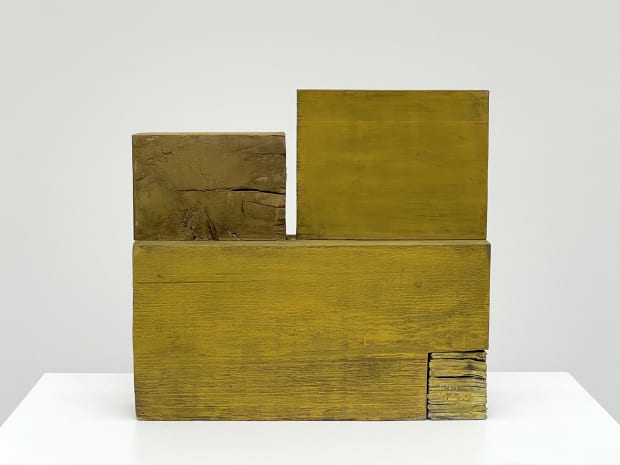
Composition with All Existing Words is a three dimensional painting, containing all existing words in the English language. Mark Manders is interested language and the way abstract ideas are represented by the printed word. Early on in his practice, he started making newspapers by using every single english word just once. In this work, he wanted the newspapers to become an object itself, a small cube, part of a larger abstract composition. Timeless and abstract, devoid of any linear narrative, the cast bronze architectural structure is integral as part of Mark's ongoing project, encompassing his entire body of work, his 'Self-Portrait as a Building.’
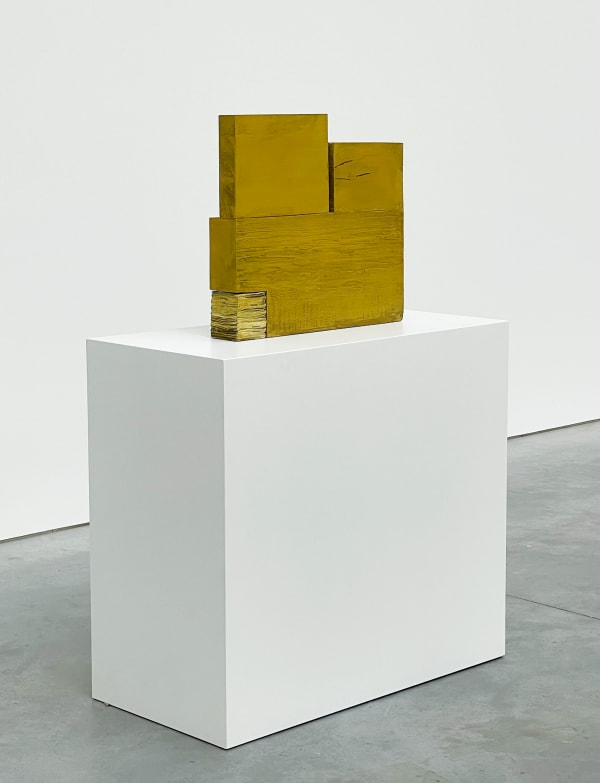
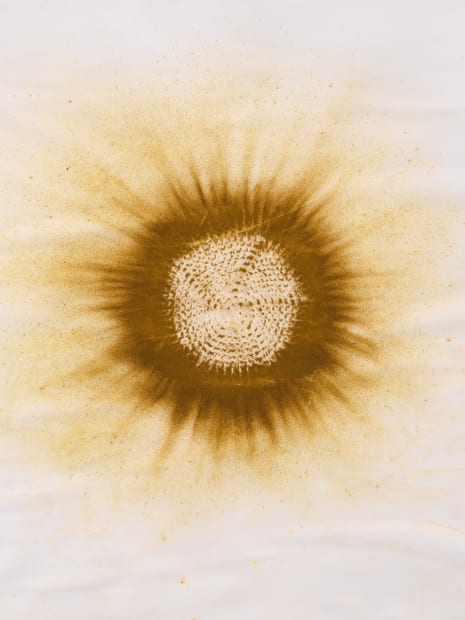
Since the mid-1990s, Ernesto Neto has produced an influential body of work that explores constructions of social space and the natural world by inviting physical interaction and sensory experience. Drawing from Biomorphism and minimalist sculpture, along with Neo-concretism and other Brazilian vanguard movements of the 1960s & 70s, the artist both references and incorporates organic shapes and materials – spices, sand and shells among them—that engage all five senses, producing a new type of sensory perception that renegotiates boundaries between artwork and viewer, the organic and manmade, the natural, spiritual and social worlds.
In this drawing, Neto takes a crochet sculpture filled with spices and throws it onto the paper to create the shape of the sun. By producing a trace of this action, Neto challenges the static nature of sculpture and draws a connection between the human body and his work.


Stola is based on an object in Lisa Oppenheim’s personal collection, an antique lace scarf with geometric patterns in beaded silver that she bought in a flea market in Paris. In the Nazi’s archive records, she came across a description of such a scarf, also originating in Paris. It was repatriated to France after the war but never restituted. Could this be the same object? Probably not, but it points to the question of the provenance of any historical object purchased in any flea market or on ebay or etsy. Where did that vintage armoire once reside? That lace tablecloth? What are the histories of the objects around us and what can they tell us? Oppenheim used the scarf itself as a photographic negative, producing an index of the object so its form is rendered in light. In the developing process, she replaced the silver gelatin in the photographic emulsion with metallic silver, conjuring the scarf’s beads out of the paper itself.

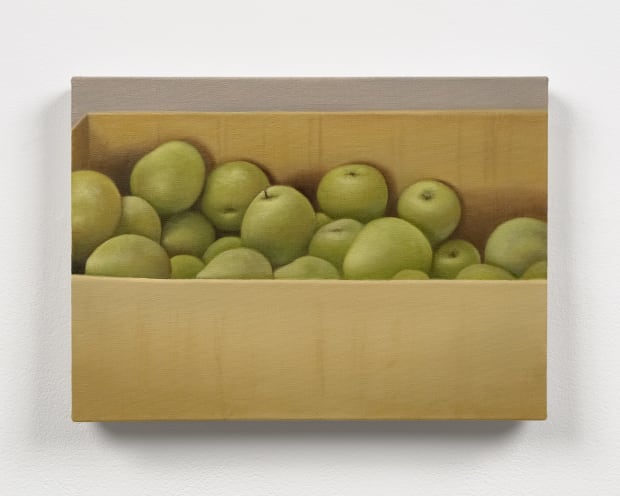
Dana Powell's small-scale oil paintings depict moments of transition and anticipation. They take the shape of night drives, full moons, swimming pools, elevator doors, still lifes with fruit, explosions, and peep holes. Unrelated at first look, these subjects prove malleable apparatus in demonstrating the unsettling power of the ordinary, and emotive potential of small shifts in formal painting strategies. Considered austerity is applied to Powell’s tableaus of the everyday, offering a window to the familiar and its undertow.

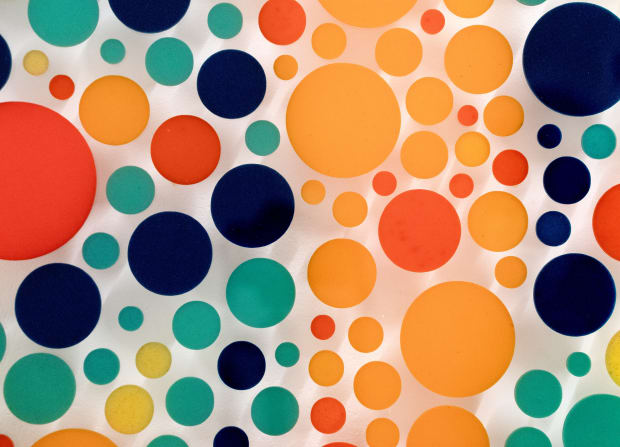
Sherrill Roland’s interdisciplinary practice deals with concepts of innocence, identity, and community; reimagining their social and political implications in the context of the American criminal justice system. For more than three years, Roland's right to self-determination was lost to a wrongful incarceration. After spending ten months in prison for a crime he was later exonerated for, he returned to his artistic practice, which he now uses as a vehicle for self-reflection and an outlet for emotional release. Converting the haunting nuances of his experiences into drawings, sculptures, multimedia objects, performances, and participatory activities, Roland shares his story and creates space for others to do the same, illuminating the invisible costs, damages, and burdens of incarceration.
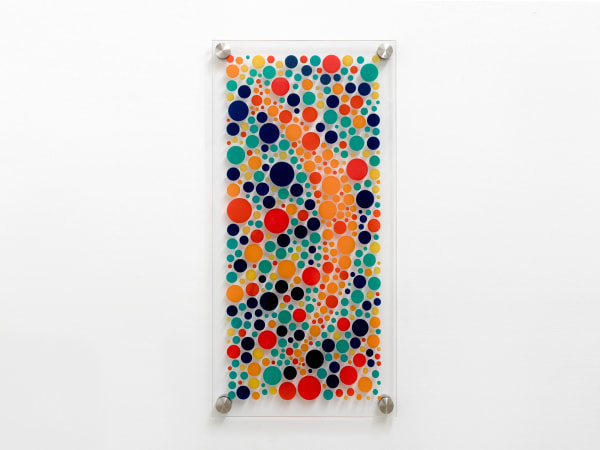

Analia Saban dissects and reconfigures traditional notions of painting, often using the medium of paint as the subject itself. Blurring the lines between painting and sculpture, imagery and objecthood, her work frequently includes plays on art historical references and traditions.
This body of work sees Saban continue her investigations into the relationship between paint, pigment and canvas. Starting with her research into the history of pigments and the composition of paint that she conducted during a residency at the Getty Conservation Institute in 2016, Saban has found it interesting to change the relationship between paint and canvas. In this work, the paint is woven through the linen.
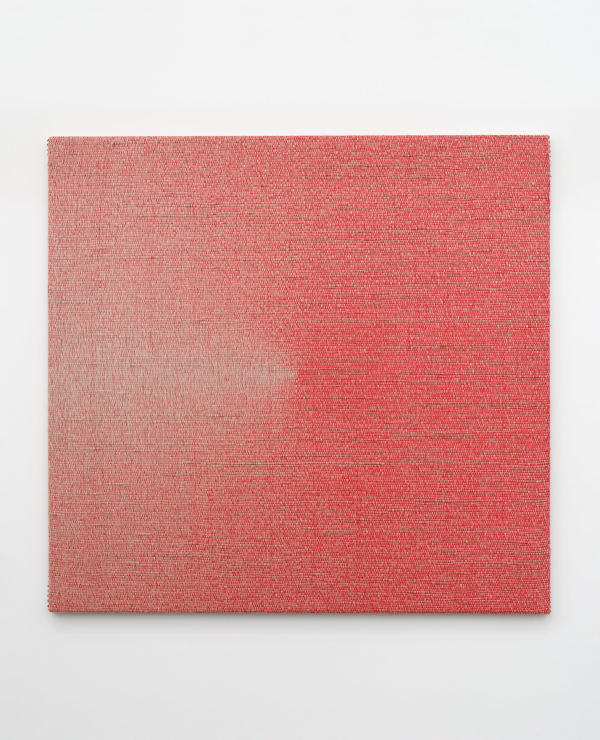
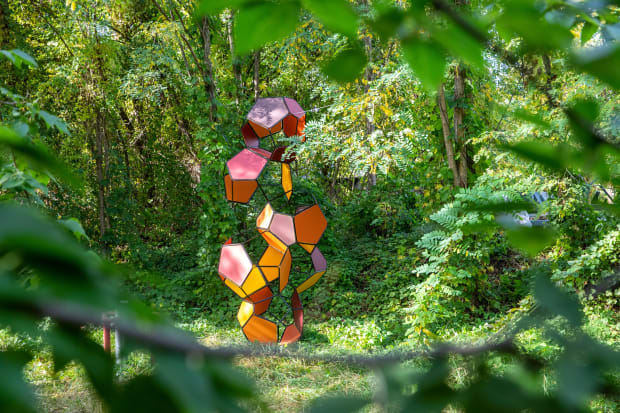
Tomás Saraceno’s cloud sculptures and installations stem from his long-standing artistic inquiry — Cloud Cities — a proposal for a common imaginary for an ethical re-alliance with the environment, the planet and the cosmic web of life beyond Anthropocentrism. Composed of six microcosmic modules with diameters of 80 cm, Silent Autumn (Ross 508 B/M+M) considers the way that subtle relationships are encoded in the language of pigments. The ochres, golds, browns, and reds correspond with the cyclical process of composition and decomposition that is common to the flora of all ecologies. The autumnal energies of the sculpture’s panels recall the materials and matter which accumulate over the ground as winter approaches. In the contemporary world, the discards of human activity and production mix with these natural materials, leaving the scars of Capitalism behind.
Studio Tomás Saraceno occupies the factory building on the former site of photographic film and dye manufacturer Actien-Gesellschaft für Anilin-Fabrication (AGFA). In its years developing dyes, AGFA attempted to faithfully reproduce pigments of nature, most notably in 1878 when it first invented the dye Malachitgrün (Malachite green), named after the mineral that bore a similarly intense hue. Many synthetic pigments were derived this way, so nature has been inadvertently woven into the processes of patenting and commodification of color, with the product titles of commercial dyes often derived from the names flowering plants. Tragically, AGFA’s desire to emulate the truth of nature was tainted by industrial malfeasance; residual chemicals from the production of pigments was deposited into the nearby river Spree, contaminating adjacent soils and the plants and animals who fed off them.
AGFA’s interconnection with nature is an all-too typical example of extractivism, a willful borrowing from the natural world while leaving in return a legacy of destruction. Silent Autumn (Ross 508 B/M+M) instead comes to represent the aliveness of matter, and the constant flow of becoming which builds our shared world. Re-figuring flows of atmospheric, temporal and energetic relation, the artwork transforms rhythms of extinction marked by systemic addiction, and instead builds toward a resilient future.

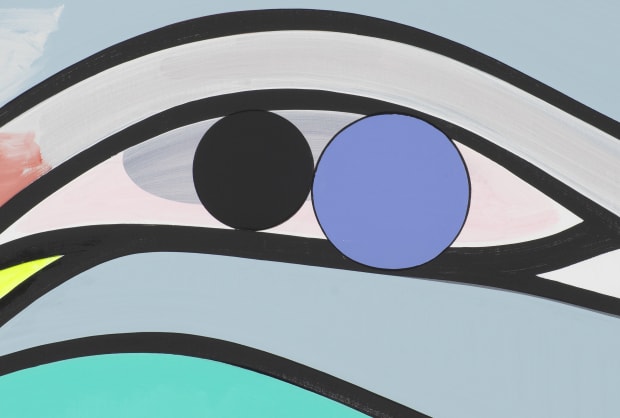
Thomas Scheibitz has developed his own conceptual language that bridges the realms of figuration and abstraction, at times dissolving them entirely. Drawing from classical painting and architecture, the contemporary urban landscape, and popular culture, Scheibitz deconstructs and recombines signs, images, shapes, and architectural fragments in ways that challenge traditional contexts and interpretations. While centrally concerned with principles of classification and systems of order, the artist’s paintings, sculptures and works on paper resist traditional categorization.


For over 20 years, Steinbach has developed this series that presents an object, unadulterated and isolated, yet framed in a way to allow the viewer to consider the ambiguity of one object's meaning. Framed as a precious cultural artifact, the found objects are stripped of their definition as commercial, or antique, or functional devices, etc.. Instead, in Minimalist fashion they are open to boundless subjective interpretation. These new associations could be related to form and design, art historical reference, sociology or psychology, and are inevitably influenced by cultural and personal contexts and histories. This display of singular objects in a protected case, as opposed to his other works that arrange objects on an exposed shelf, continues a thread that runs throughout his entire practice: calling attention to the common rituals of collecting, framing, and presenting objects, and within this re-contextualization, touching on our aspirations and values in relation to the objects of our modern world.
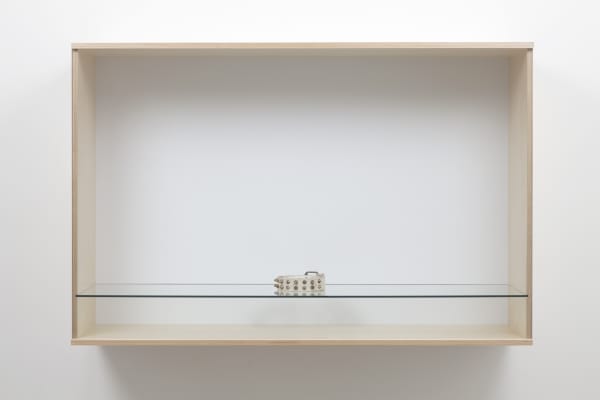

Divide Light if you Dare (Fallen Sky Series) relates to Sarah Sze’s landmark installation Fallen Sky, a permanent, site-specific work nestled into a hillside at Storm King Art Center in Upstate New York. Like Fallen Sky, which was created partly through a process of erosion, this sculpture is inspired by ancient architecture and the language of ruins, merging with their surroundings and appearing as if they were both integral to the landscape and at a point of disintegration. To create the works, a simple pendulum hung from the studio ceiling was employed to create a perfect bowl in clay. The ‘fast’ movement conveyed in this sculptural gesture is starkly juxtaposed with the more glacial time and movement conveyed in the sculptural language of the sides of the work: in the drying process the clay split and cracked until barely holding together.
The completed work in stainless steel with reflective mirror-polished surfaces catch an ever-changing stream of passing light and shadow across their multiple individual elements. Sze has referred to the dynamic nature of these works as ‘filmic’ in their ability to reveal ‘how the landscape behaves’, capturing fragments of the surrounding environment and co-opting them, in effect, into a fragmented film in real time. These works operate at a distinct register, collaging and camouflaging into any environment. At the same time, the idea of the fragment – of many pieces forming a whole – relates to Sze’s practice, her use of collage, and her evolving process where ‘the sculptures generate the paintings, and the paintings generate the sculptures.’


In this photograph, Gillian Wearing references a photograph of Jean Cocteau taken by Berenice Abbott in 1927, when Abbott was living in Paris and portraiture served as her primary livelihood. Abbott’s Jean Cocteau in Bed with a Mask portrays the great surrealist artist, poet, writer and filmmaker sitting in bed with a somewhat vacant expression, which mirrors the expression on the Papier-mâché doll’s head he cradles in his arm. In Wearing's tribute work, the doll’s head becomes a masked portrait of Gillian Wearing herself and a masked Gillian as Cocteau is depicted gazing at her. Abbott used the portrait as a vehicle to reveal the sitter’s unique character, depicting their physical presence and intellectual depth, which Wearing recreates in her portraits that comment on the relationship between public and private identities.


Interested in language and its inevitable abstraction, Lisa Williamson leans into the formal considerations of sculpture to create works that are visually precise, physically resonant, and often attune to the spaces in which they are exhibited. The artist’s idiosyncratic practice follows a logic that is associative; compressing internal experience into forms that are both tangible and resistant at once. While there is a significant level of reduction and abstraction throughout the artist’s work, aspects of architecture, landscape and the figure remain visible throughout.
Lisa Williamson’s solo exhibition, A Landscape and a Hum is currently on view at Tanya Bonakdar Gallery, New York.
